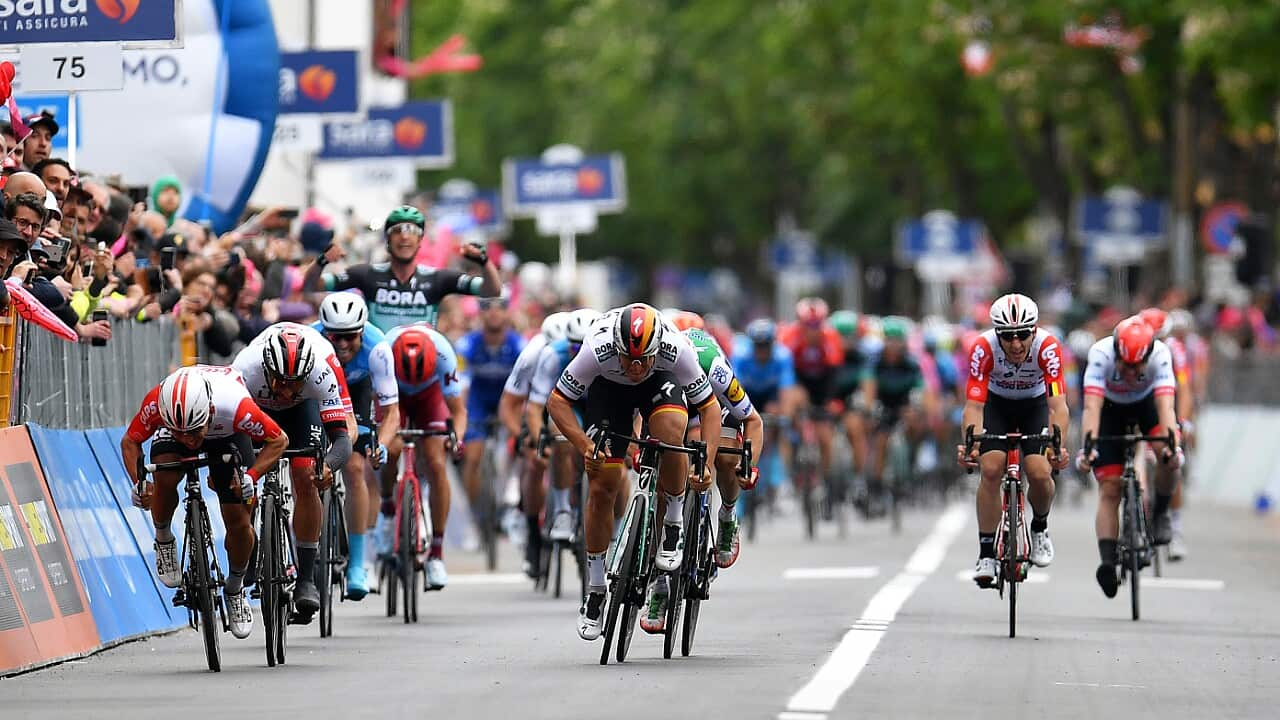Roglic (Jumbo-Visma) retained the overall leader’s pink jersey after the second stage, a 205km ride from Bologna, keeping a 19-second lead over Simon Yates (Mitchelton-Scott) and 23 seconds over two-time winner Nibali (Bahrain-Merida).
Although Nibali would have welcomed wearing the ‘Maglia Rosa’, the pressure of controlling the race now lies on the shoulders of Roglic’s team, which could have consequences later in the race.
READ MORE

Ackermann wins Giro second stage
“They will have a lot of work because the next stages are over 200km and the weather is also not the best weather,” Paolo Slongo told Reuters. “Their team will suffer from these long, hard stages.”
Asked about Nibali’s form, Slongo said that the 34-year-old would not hit his peak just yet.
“We prepared him to be at his best for this Giro d’Italia, who is the main goal of his season,” Slongo said.
“We shaped him step by step so that he can perform for the Giro, but he will be at 100 per cent in the last week when the hardest climbs come.
“If in that final week, you feel the fatigue of the first weeks, then the race is hard to manage.”
In 2016, Nibali demonstrated that he could time his efforts perfectly over three weeks, leapfrogging Esteban Chaves (Mitchelton-Scott) into the top spot on the penultimate day with a perfectly-executed attack during the last mountain stage.
This year’s toughest stages are the 16th and 20th, featuring gruelling climbs on which the race is likely to be won and lost.



